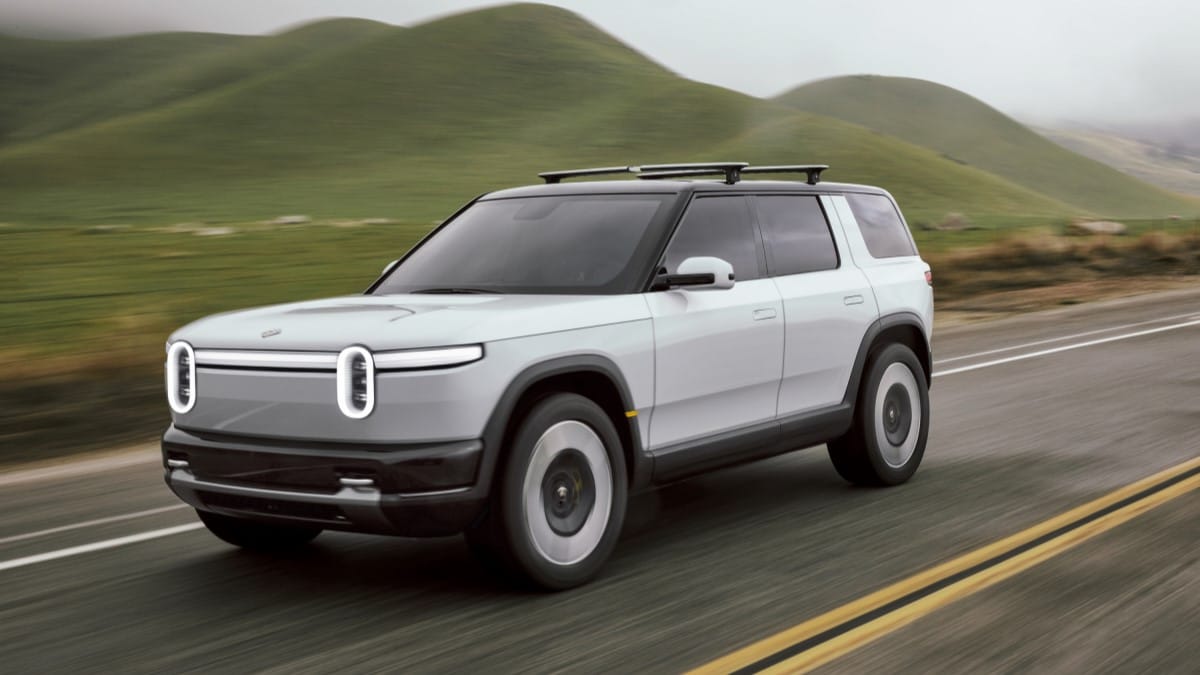“Oh, and one more thing.” It’s a Silicon Valley trope by now. But you have to tip your hat when someone does it well.
Electric vehicle (EV) builder Rivian invited the press to see one new vehicle today and showed off two. Perhaps 2.5, depending on your perspective.
Rivian, in case you haven’t encountered one in traffic yet, builds all-electric pickup trucks and SUVs recognizable by their rugged look and oval-shaped headlights that suggest giant cartoon eyes. Critics tend to praise the R1T pickup and R1S SUV for their long ranges and off-road capability – particularly in pricey quad-motor trim.
They’re not cheap, both starting near $80,000.
But many startup automakers use a top-down growth strategy, building their most expensive models first and introducing less costly cars as economies of scale make that possible.
Rivian took several steps down that path at once today.
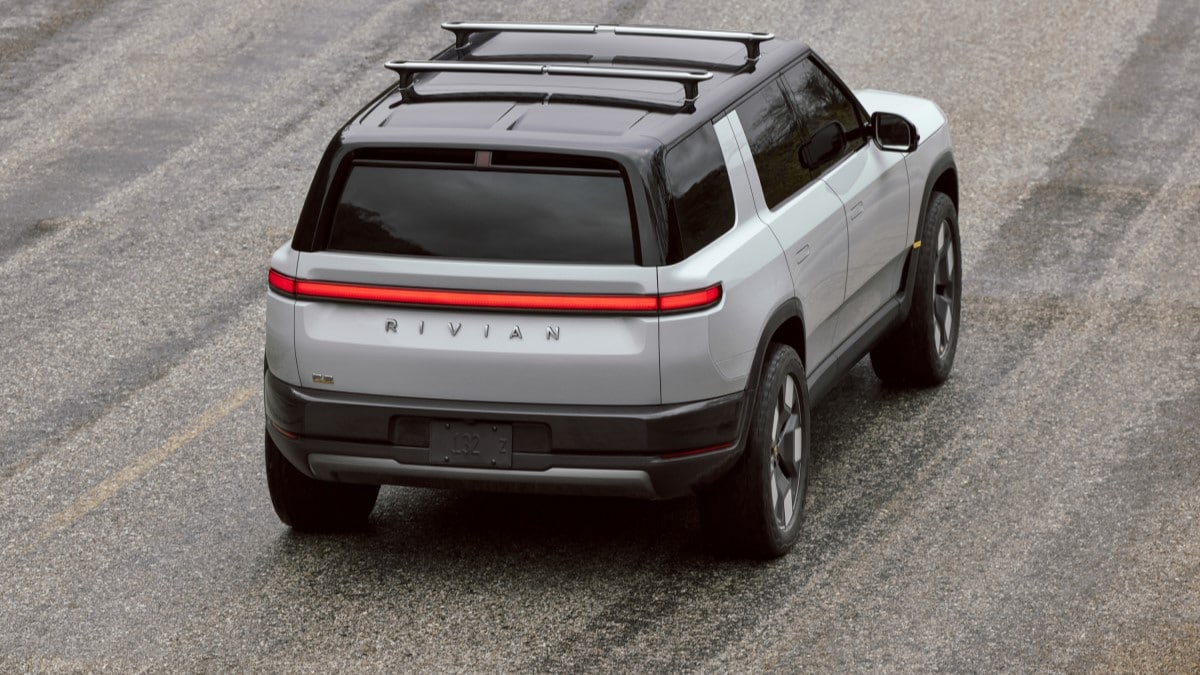
The R2
First, CEO RJ Scaringe unveiled what the assembled media expected – a 2-row compact SUV called the R2.
It bears a strong family resemblance to the 3-row R1S, shrunk to a smaller scale. The rear window glass goes down for easy access to the cargo area. Both rows of seats fold completely flat, Scaringe said, creating an area large enough for two to sleep in.
The interior features the expected pair of screens and an unexpected pair of glove boxes. Scaringe said early buyers of the R1 series had complained about the lack of glove box space, so Rivian created as much as it could.
Scaringe cited a $45,000 starting price. Rivian typically adds a $1,800 destination fee to its cars, so that price is functionally $46,800.
Scaringe said the car will be built in Normal, Illinois. That might enable it to qualify for part or all of the federal government’s $7,500 EV discount. We probably won’t know until closer to its expected 2026 on-sale date.
The R2 will be offered in single-motor rear-wheel-drive (RWD) or dual- or tri-motor all-wheel-drive (AWD) setups. Rivian did not offer performance details on any of the three.
The SUV “will feature two battery sizes,” Rivian said. It promised a range of over 300 miles for the larger size regardless of the number of motors. Each can charge from 10% to 80% capacity in about 30 minutes.
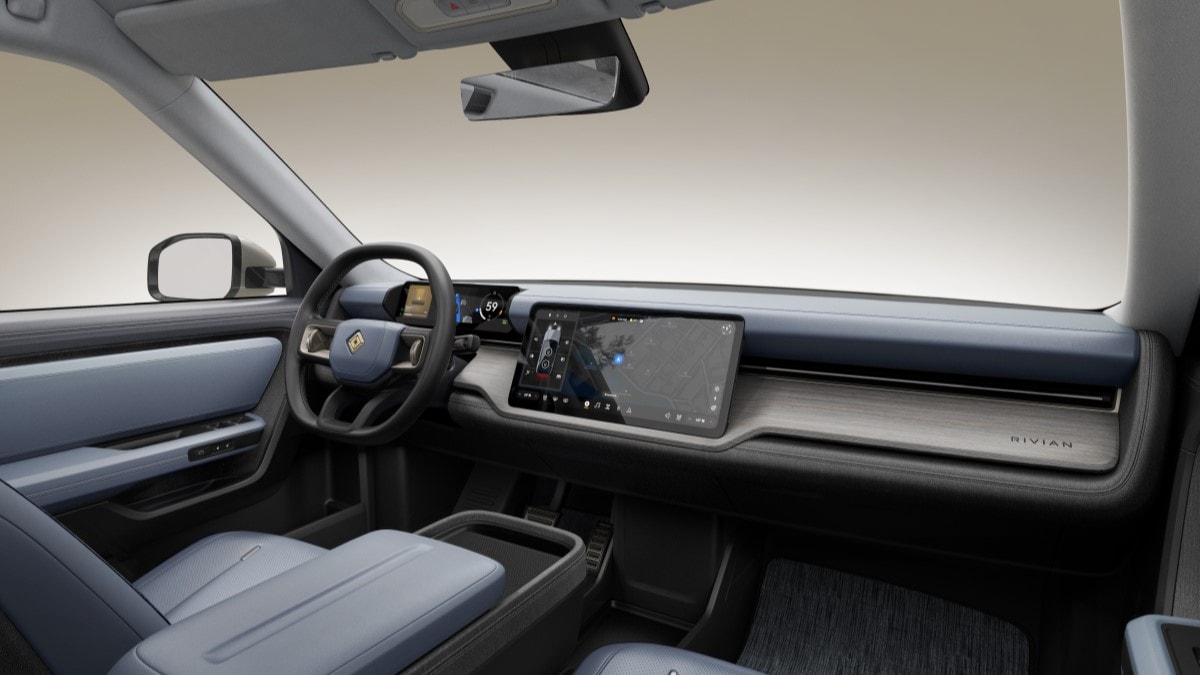
They’ll charge using the Tesla-style North American Charging System (NACS) connector but can use the Combined Charging System (CCS) connector with an adapter. That combination should give them access to virtually every public charging station in America.
Scaringe cited a 0-60 mph time under 3 seconds for the tri-motor edition. He promised partial automation capability to let owners “get on the highway, take your hands off the wheel, and get your time back.”
Orders have already opened with a $100 refundable deposit.
The R3
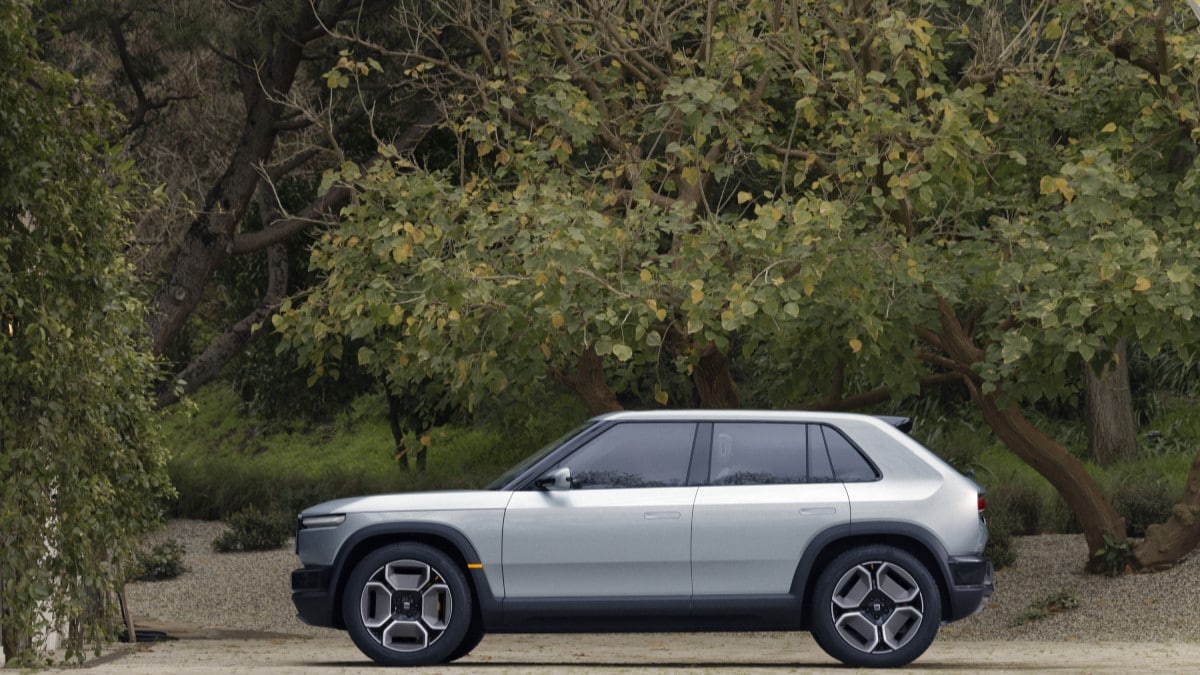
As the R2 presentation wrapped up, a door opened behind Scaringe, and a completely unexpected smaller model drove onstage. The R3, Scaringe said, is “our take on a crossover,” with a “shorter wheelbase and tighter dimensions” that “really enable it to be maneuverable.”
It appears likely to fit into the subcompact SUV segment.
It shares a platform with the R2 and will be offered with all three drivetrain setups. But Rivian has published no specifications.
A sharply-raked rear window gives it a 1980s vibe, reminding the assembled journalists of everything from an early Volkswagen Golf to a Yugo (“in the nicest possible way”). That glass opens, split-tailgate style, like an old-school SUV.
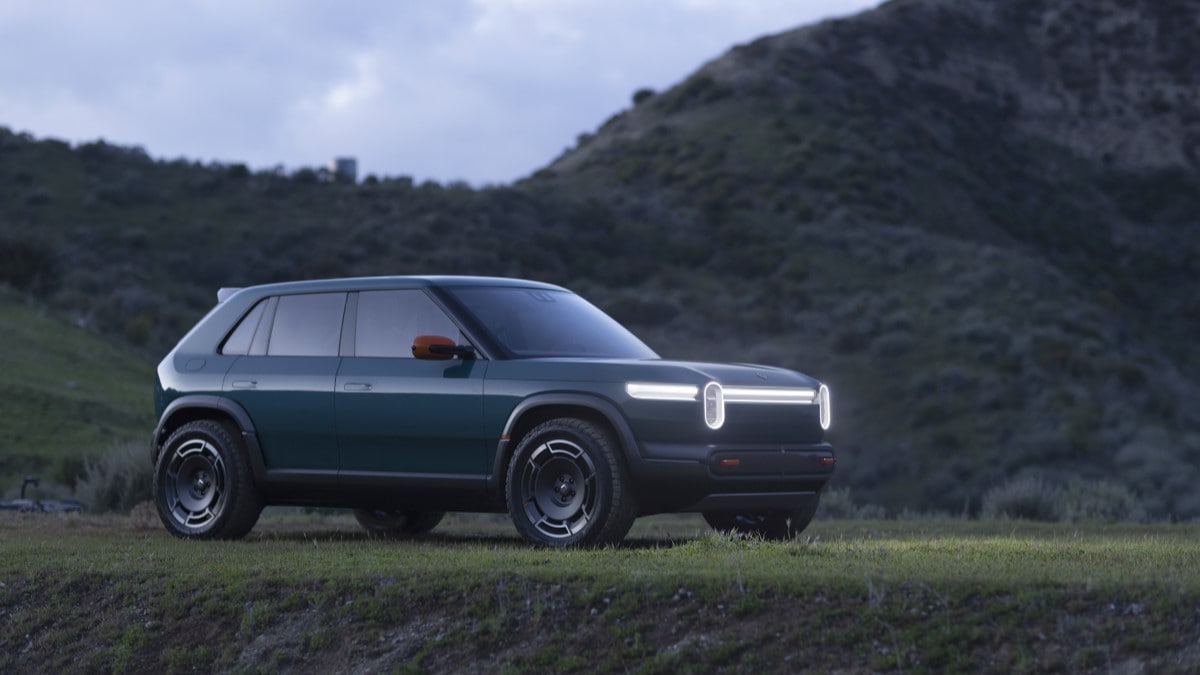
Scaringe also showed off a high-performance version called the R3X. In medium blue with orange side mirrors and lime seats, it looked like an R3 redesigned by an energy drink manufacturer. But we commend Rivian for experimenting with color when most automakers fear anything not gray.
Scaringe promised performance details on the R3X in the near future.
Cox Automotive, parent company of Kelley Blue Book and Autotrader, made a $350 million equity investment in Rivian in September 2019.
